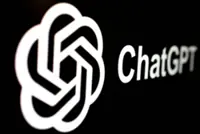Experts share that it is becoming increasingly common now for companies in Malaysia to send phishing emails to their own employees to test their cybersecurity awareness. — Pixabay
So you got an email from your company asking you to update your details to claim a performance bonus? Or maybe a message urging you to sign up fast for free pizza – limited to the first 99 staff? What about a request from a superior asking for a fund transfer?
Before you click on any links, pause and think because it might not be what it seems. In fact, it could be your own company testing how well you can spot a scam.





